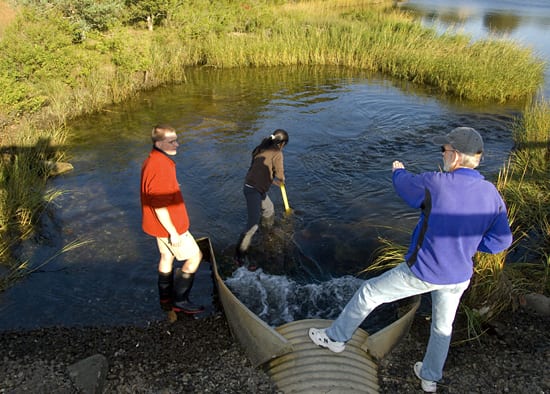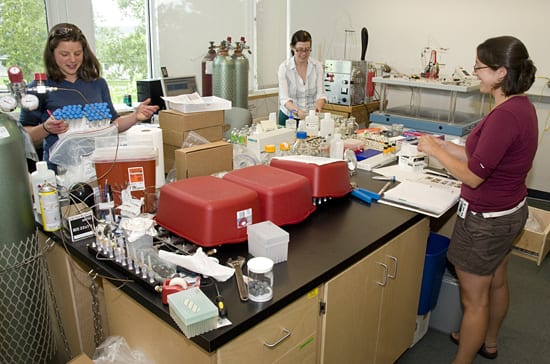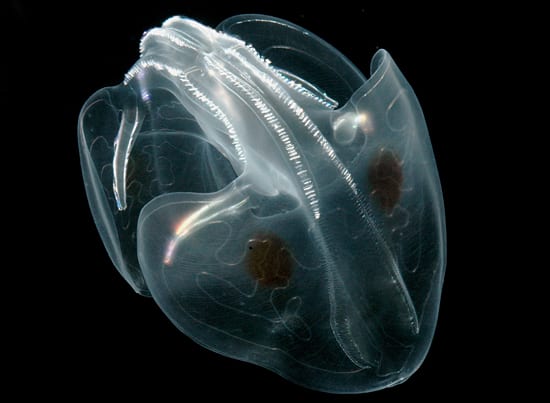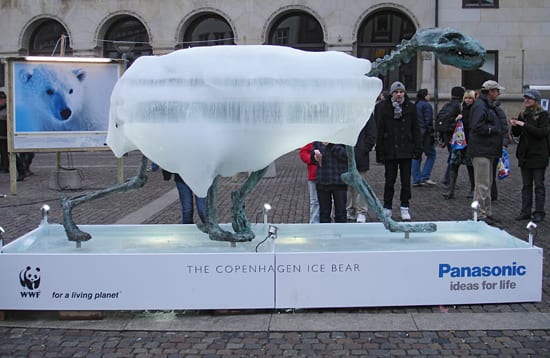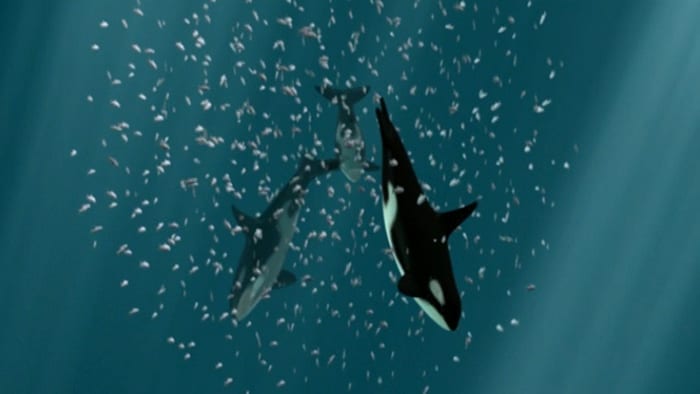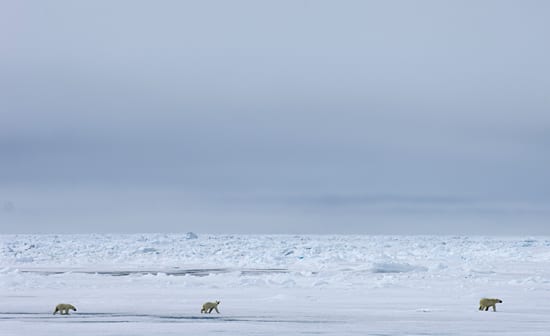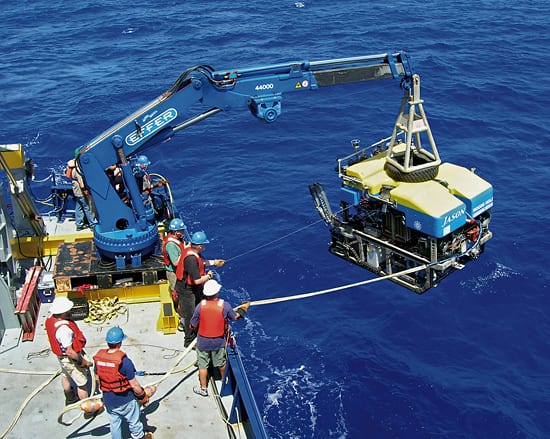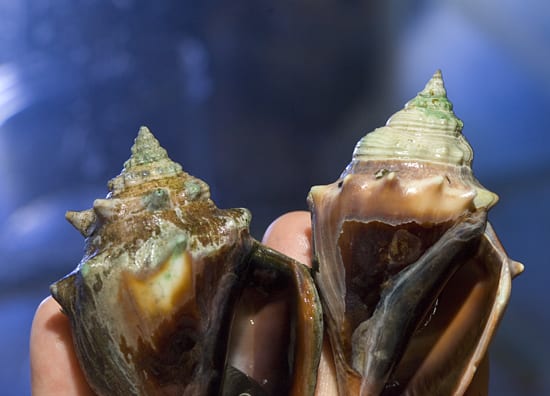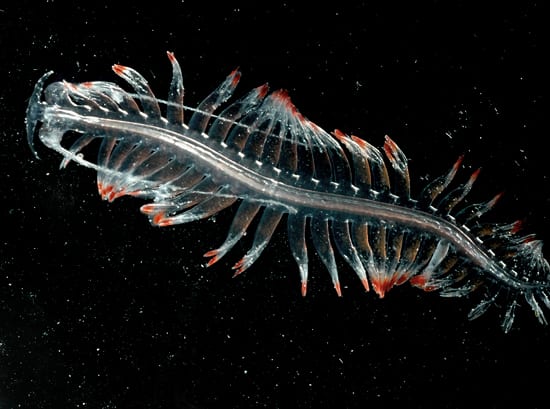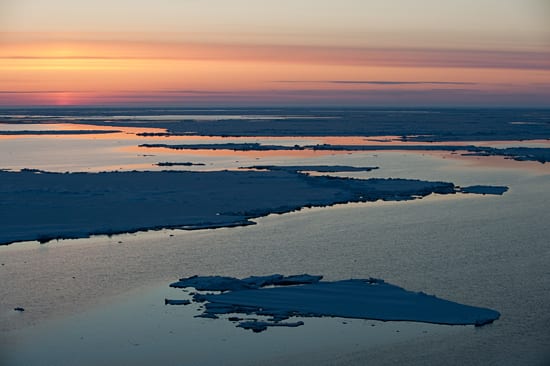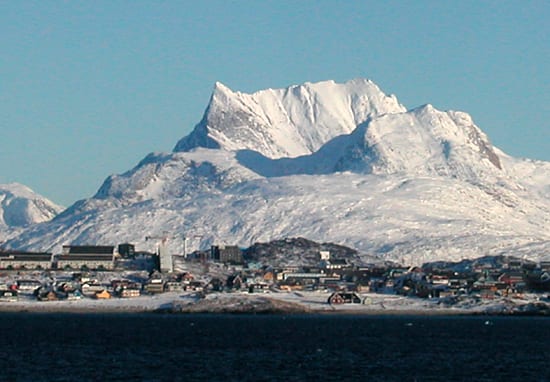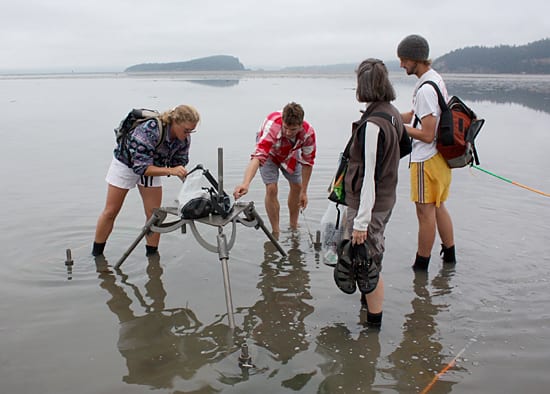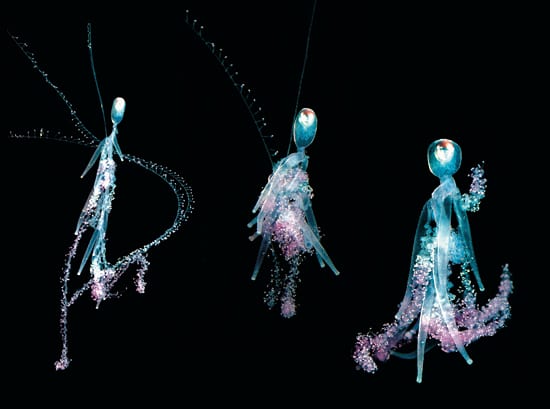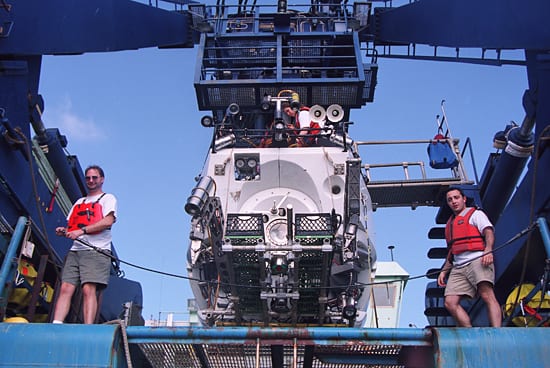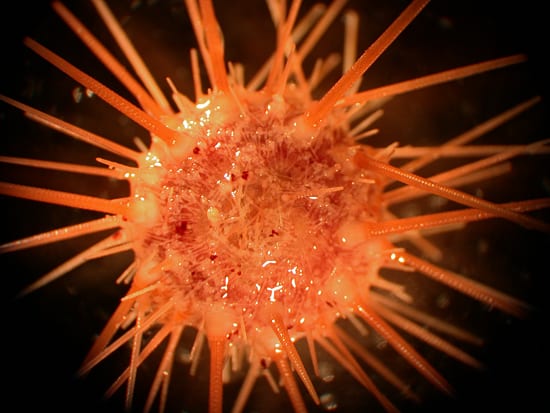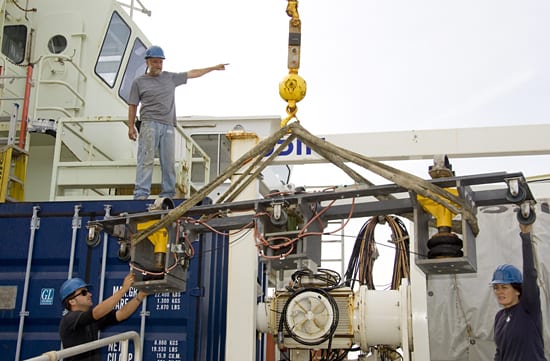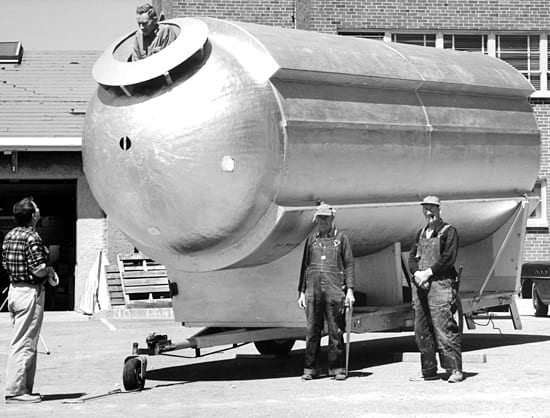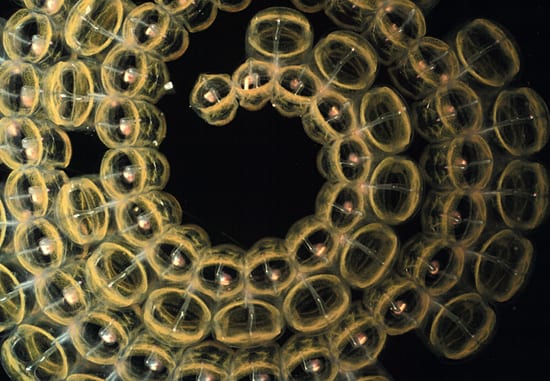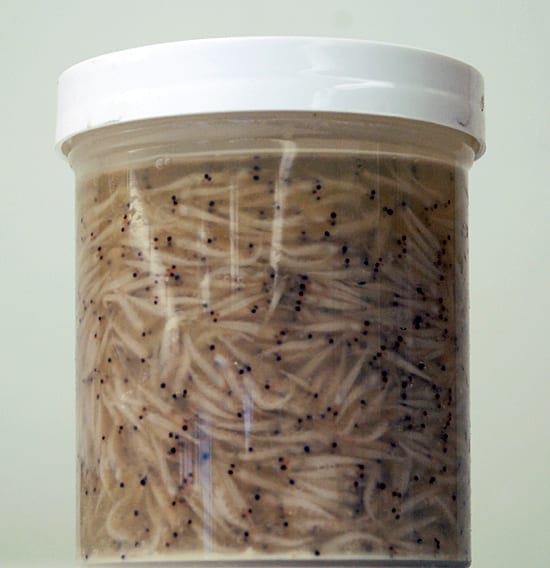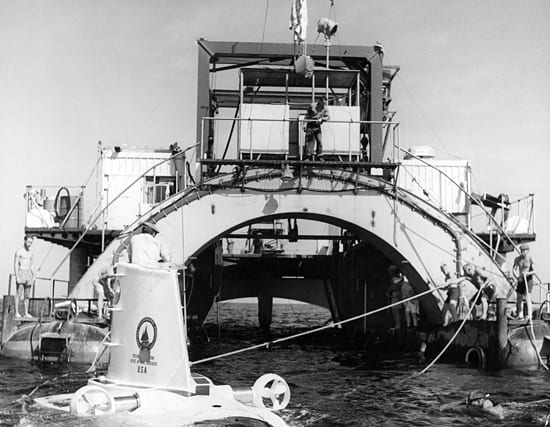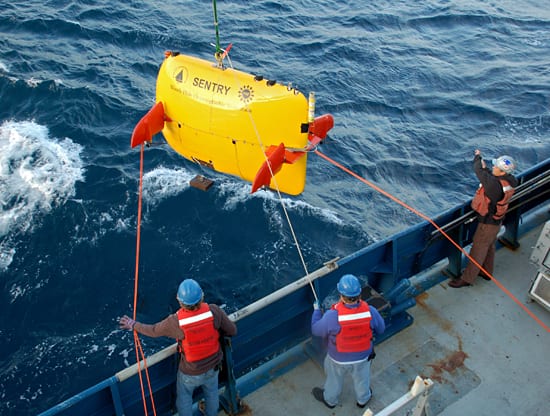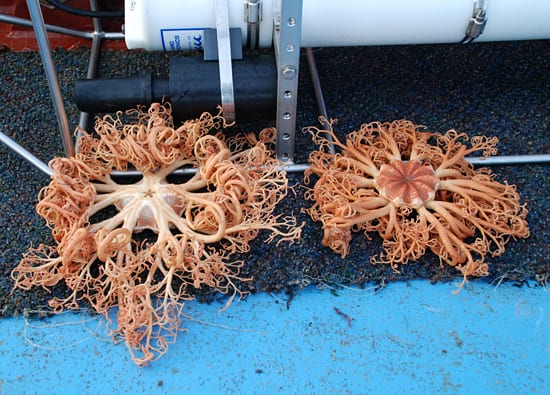Multimedia Items
Out of the classroom, into the pond
WHOI Senior Scientist Larry Pratt of the Physical Oceanography Department and MIT-WHOI Joint Program students Wilken-Jon von Appen and Ping Zhai test a volume flow rate formula developed in one…
Read MoreInvestigating the chemistry of a pond
Cara Manning (center), a 2009 Summer Student Fellow from the University of Victoria, Canada, works in the lab. She investigated how much nitrous oxide — a potent greenhouse gas —…
Read MoreNeptune’s mask
Depending on interpretation, this view of the ctenophore Ocyropsis maculata looks like either an ancient Greek helmet or a clamshell bucket for earth-moving machines. This large (to 6”) predator uses…
Read MoreA melting message
British sculptor Mark Coreth carved a polar bear out of ice, with a bronze skeleton inside, in hopes of sending an environmental message when the Arctic animal art piece melts.…
Read MoreCarousel Feeding
Orcas coordinate their movements, and possibly communicate, as they herd schools of herring into tight masses and then slap their tails to stun the fish before eating them. To study…
Read MoreSurviving melting ice
A recent U. S. Geological Survey study—using data from WHOI and other sources—determined that climate change in the Arctic is dramatically reducing polar bears’ survival and reproductive rates. The study…
Read MoreJason in Photos
Jason in Photos
Risky shell game
Justin Ries, a former postdoctoral scholar at WHOI, and colleagues Anne Cohen and Dan McCorkle grew 18 species of shell-building marine organisms in tanks under air containing different concentrations of…
Read MoreCrystal sea serpent
A miniature serpent? Scientists found this glassy planktonic worm in the Southern Ocean near Antarctica. A relative of earthworms, it uses its red-tipped swimming paddles to swim through the water…
Read MoreOceans Day at Copenhagen
The ocean plays a critical role in Earth’s climate system. For the first time, the United Nations Climate Change Conference will include an Oceans Day. Held on December 14, Oceans…
Read MoreKnorr returns to Greenland
This photo was taken on Oct. 29, on the Knorr’s return to the port of Nuuk, Greenland. The mission is part of a seven-year international effort to monitor and measure…
Read MoreEbb and flow
Associate Scientist Britt Raubenheimer, Evan Williams and Seth Zippel of the Applied Ocean Physics and Engineering department, disassemble an instrument tripod with a volunteer in Skagit Bay, Wa. As part…
Read MoreDancing in the dark
Three views of one animal look like a magical dancing sprite in the night sea. A relative of the Man-o’-War, the predatory siphonophore Rhizophysa, is four inches high when contracted…
Read MoreSecuring the sub
Back in 2006, engineering tech Andy Billings (left) and then Alvin pilot Anthony Tarantino finish securing the submersible on the deck of the research vessel Atlantis. The Human Occupied Vehicle…
Read MoreDeep dweller
This tiny — about 1 centimeter in diameter — sea urchin made its way from the ocean floor near the Galapagos Rift into the collection basket of the Deep Submergence…
Read MoreMarine core
Crew members of the R/V Knorr offload the Long Core system ‘core barrel car’ as the Knorr arrives home from nearly eight months of work in the Pacific.The pneumatic car…
Read MoreBead curtain
It looks like a curtain of Mardi Gras beads hung in a doorway, but fish should choose another door! These are a Physalia’s (Man-o’-War jelly’s) tentacles hanging beneath its ship-shaped…
Read MoreVintage sub
A mockup of the 42-foot Aluminaut, shown at WHOI in 1961. The deep submergence vehicle (DSV) was owned by the Reynolds Metals Co. (later Reynolds Aluminum) and operated briefly by…
Read MoreSpiral coil
Salps are planktonic filter-feeders — each one a tireless vacuum continuously clearing phytoplankton cells from the sea by filtering water through a mucus net as it swims. These marine animals…
Read MoreThe eyes have it!
Krill are very small crustaceans of the sea that eat even smaller creatures called phytoplankton. Krill play a major role in the food chain because they provide food for a…
Read MoreLulu and Alvin
Early image of the catamaran Lulu, the first support ship for the submersible Alvin (in foreground), circa 1965. The 105-foot Lulu was built in Woods Hole from surplus minesweeping pontoons and…
Read MoreSearching seeps
The crew aboard the R/V Atlantis launch the autonomous underwater vehicle (AUV) Sentry during a September 2009 cruise to study natural oil and methane seeps at a site about a…
Read MoreBasket stars
These Basket stars were collected in Barrow Canyon, Alaska, using a Tucker Trawl during a research cruise led by biologist Carin Ashjian in 2009. Basket stars are a type of…
Read More
